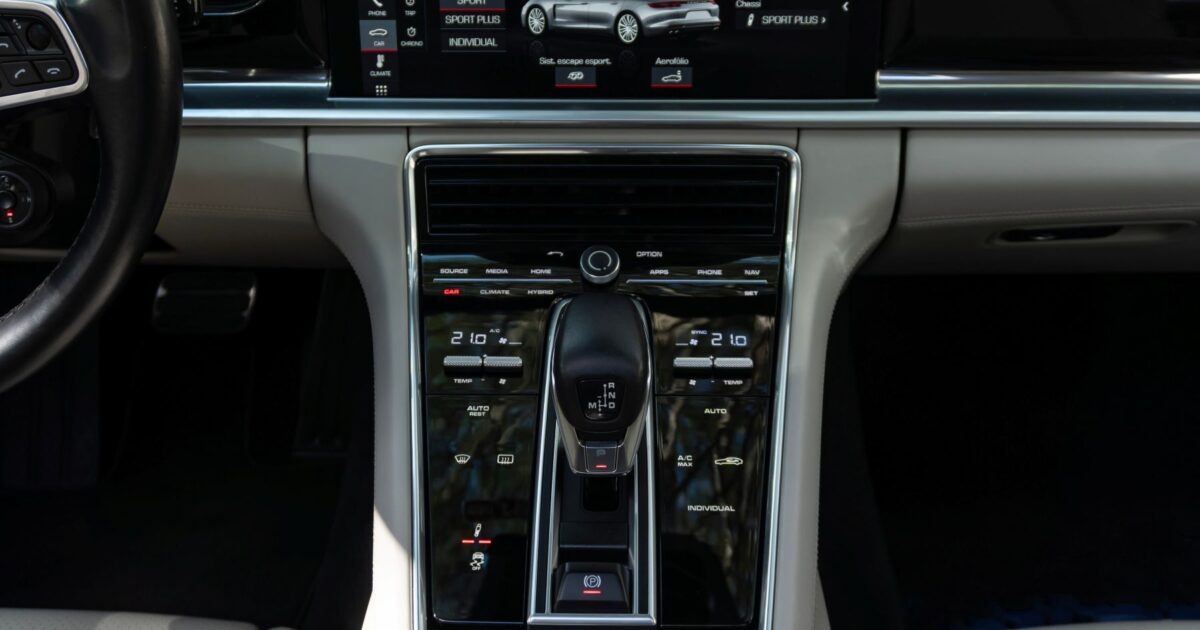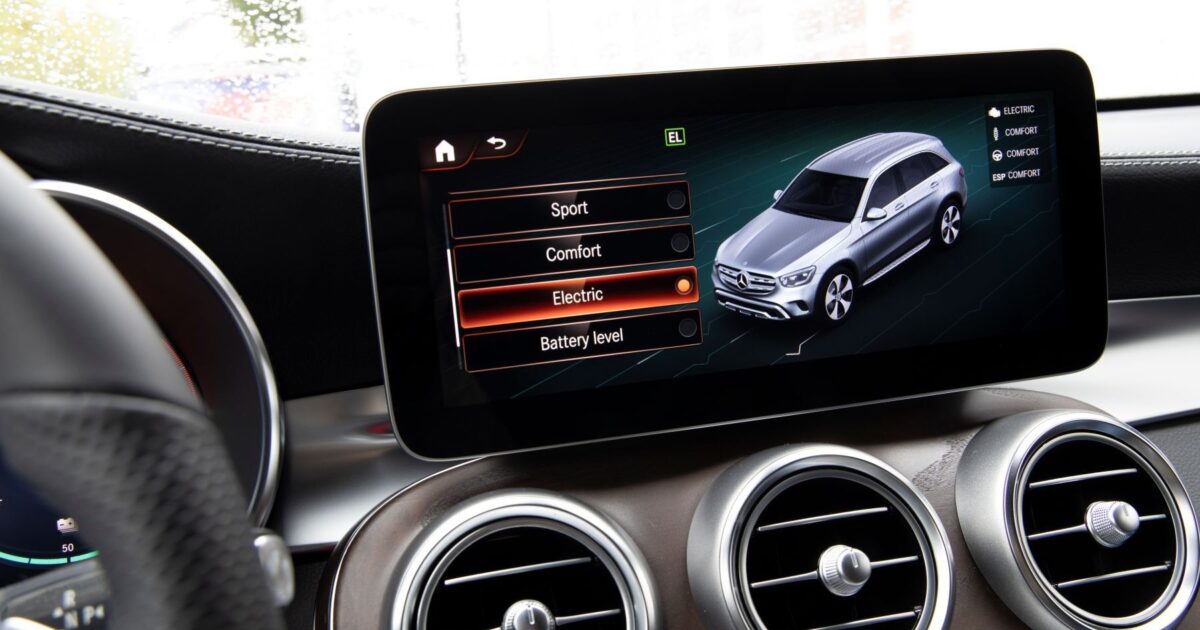The 2025 Victoria’s Secret Fashion Show is happening! Tonight, the star-studded runway is taking over the Brooklyn Navy Yard, where top models such as Adriana Lima, Gigi Hadid, Anok Yai, and Paloma Elsesser will don fine lingerie—and angel…
Blog
-

First Look Of Angela Bassett Headed To Space
Last time 9-1-1 saw Angela Bassett’s Athena, she was getting blasted into space alongside Aisha Hind’s Hen.
In Episode 2 of Season 9, titled “Spiraling,” things are about to go haywire as their mission gets a little scary.
ABC’s…
Continue Reading
-

Caelan Doris to Captain Ireland Against the All Blacks at Soldier Field » allblacks.com
Ireland coach Andy Farrell has named his squad to face the All Blacks in Chicago on November 1.
Caelan Doris will captain the side, which includes three New Zealanders, halfback Jamison Gibson-Park, second five-eighths Bundee…
Continue Reading
-

Williams unveils iconic 2002 look to celebrate Atlassian partnership
Williams will race in a 2002-inspired throwback livery at this weekend’s United States GP in celebration of the team’s title partnership with Atlassian.
The livery is a visual representation of how both Williams and Atlassian have survived and…
Continue Reading
-
Springsteen film strips away the myth to depict 'Bruce, the man' – Reuters
- Springsteen film strips away the myth to depict ‘Bruce, the man’ Reuters
- Jeremy Allen White on playing The Boss in “Springsteen: Deliver Me From Nowhere” CBS News
- Scott Cooper Explores Bruce Springsteen’s Intimate Chapter Hollywood Outbreak
Continue Reading
-

How to Disable Some or All AI Features on your Samsung Galaxy Phone
Several of Samsung’s Galaxy phones and tablets are now stuffed with AI features — whether you use them or not. While some can be helpful if you remember to use them, many may be enabled but are left unused, potentially taking up space and RAM on…
Continue Reading
-

Smoke screen: the growing PHEV emissions scandal
While EREVs can go further than PHEVs, they can’t go as far as BEVs with current technology
As discussed in previous sections, the average electric range of Chinese EREVs is above 180 km, surpassing the 80 km range of PHEVs but falling short of the average 500 km range of BEVs in Europe. However, the best-in-class Volkswagen ID.ERA concept car is expected to reach 300 km, and future EREV models fitted with new battery technology could extend this further. CATL announced its new Freevoy battery could unlock electric range over 400 km. For example, the Stellar drive from IM Motor is expected to use a 66 kWh Freevoy battery to achieve an electric range of 450 km. These future long-range models with an electric range of over 300 km have the potential to offer a range comparable with that of today’s entry-level BEVs.
While EREVs can be cleaner than PHEVs, today’s model falls short of the high environmental standards required in Europe
EREVs benefit from powerful electric motors and a series configuration that enables emissions to be minimised in electric mode. This is an advantage over PHEVs, which have less powerful electric motors and therefore drive in combined electric-combustion mode for a significant proportion of their use.
EREVs could reduce NOx emissions compared to PHEVs. If engineered well, the EREV combustion engine would operate almost like a stationary generator with a steady load, reducing NOx emission spikes that occur during dynamic engine operation.
Due to their long ICE range capability, the average utility factor of EREVs could be between 15% and 70%. They may therefore exhibit similar charging behaviour to PHEVs, which travel more than half of their distance in Europe in depleted battery mode. Nevertheless, well-designed, long-range (300+ km) EREVs with a limited fuel tank size (e.g. 15 L) could be driven predominantly in electric mode, achieving a utility factor close to 70%.
Taking the whole lifecycle of the vehicles into account, including the production phase, BCG calculated that EREVs with a 15% utility factor emit, on average, 127% more CO₂ than similar BEVs. Even with a utility factor of 65%, EREVs would emit 48% more CO₂ than BEVs over their lifetime, making them suboptimal in terms of environmental performance.
EREVs benefit from fast-charging capability, yet they rely on fossil fuel infrastructure
With the ability to use DC fast charging at a rate above 50 kW, all EREV models have a significant advantage over PHEVs. Moreover, the ability of these vehicles to drive in combustion mode can be useful for a certain category of users during the transition, particularly those living in areas with limited charging access. However, as the transition progresses towards the end of the 2020s, European regulations such as the Alternative Fuel Infrastructure Regulation (AFIR) and the Energy Performance of Buildings Directive (EPBD) are expected to provide most drivers with sufficient access to public and private charging. While an ICE range is beneficial in the short term, it will not be a significant advantage for EREVs in the 2030s as fuel stations become scarcer. Furthermore, the implementation of carbon taxes as part of the Emissions Trading System for road transport (ETS2) is expected to increase fuel prices and therefore driver costs. Reliance on fossil fuel infrastructure could also become a disadvantage as Europe increasingly prioritises energy sovereignty.
The future price of the EREV powertrain is uncertain but operating costs will be a burden
Compared to PHEVs, these models have larger batteries and could initially be sold at a higher price. However, as battery prices are expected to decrease, accounting for a smaller proportion of the total car price, other factors could influence vehicle pricing. For example, well-designed EREVs with small combustion engines for emergency backup could be built on the same platform as BEVs with a lower complexity than PHEVs, benefiting from the economies of scale of the BEV platforms. In the European market, PHEVs will face an increasing cost burden as the production volume on ICE platforms decreases. Therefore, EREV could become cheaper than PHEVs in the medium term.
Despite smaller batteries than BEVs, EREVs would be more complex and costly due to the additional ICE components that would likely not benefit from significant economies of scale. Therefore, EREV prices in Europe are unlikely to fall below BEV prices. BloombergNEF long-term modelling confirms this for the Chinese market as they show that, in the absence of subsidy, EREVs would never reach price parity with battery electric vehicles, but they could displace PHEV sales due to their lower price.
Overall, a well-designed EREV with a small combustion engine could be cheaper than a PHEV, but it is unlikely to be as affordable as a mass-market BEV. However, EREVs could provide cheaper options than BEVs in premium SUV segments where extra-large BEV batteries may be common.
In terms of total cost of ownership (TCO), reports from BCG highlight that EREVs incur higher costs than BEVs. BCG calculated that a D-segment EREV would cost €1,000–€1,200 more per year than a similar BEV over a five-year ownership period.
Based on sales price and TCO, EREVs appear to be better suited to premium segments, where users are less sensitive to operating costs and long electric ranges could limit the price benefits of BEVs.
EREVs are not suited to mass-market segments, but they could serve as a transition technology for certain users before 2035 when replacing combustion vehicles
Firstly, they can serve users driving long distances and living in remote areas, where charging infrastructure is expected to remain limited during the transition, and who lack access to private charging at home or at work. While this use case is quite common in China, explaining the popularity of EREV in the country, these conditions are far less common in Europe and should disappear by 2035 thanks to charging infrastructure coverage. In this use case, well-designed EREVs can provide an emergency backup drive in combustion mode. However, the fuel tank should not be oversized to prevent the vehicle from being used primarily in combustion mode.
Secondly, EREVs would be designed to target premium drivers seeking large vehicles with long-range capabilities and intermediate features between PHEVs and BEVs. A survey conducted by McKinsey has confirmed that the interest in EREVs was higher among owners of premium-brand vehicles. However, these use cases are expected to be relatively limited, given the increasing competition from long-range PHEV models (e.g. Lynk & Co has introduced a model with an electric range of 200 km) and new battery technology that enables ultra-long-range BEVs (e.g. Mercedes-Benz is testing a BEV prototype with a range of 1,000 km using a solid-state battery).
Chinese carmakers are leading the way with EREV technology, whereas European carmakers have limited plans in Europe
EREV technology does not appear to be a strategic priority for European carmakers. Many carmakers are already benefiting from, or planning to further develop, their PHEV technology, which benefits from the legacy ICE supply chain in Europe. In this context, carmakers have not focused extensively on EREV, a technology that is dominated by Chinese companies and would not significantly benefit the ICE supply chain in Europe.
This technology is being developed for the premium segment, with BMW considering selling an EREV version of the iX5 in Europe and luxury carmakers such as Lotus developing high-end EREV models. However, carmakers must prioritise investment in BEVs to develop the best BEV platforms for the market, and avoid making competing investments in PHEV or EREV technologies. For example, the CEO of Volkswagen declared that it makes no sense to have both range extenders and plug-in hybrids in smaller European cars, whereas this technology is relevant for large vehicles sold in the US.
Finally, in the undesirable case where the EU allows for an exemption for the sale of vehicles running on carbon-neutral e-fuels under specific conditions after 2035, EREVs may be the preferred e-fuel compatible vehicle given that the high prices of e-fuels would limit such fuels to niche applications.
Continue Reading
-

Plug-in hybrids pollute almost as much as petrol cars – EU data
The EU car industry wants plug-in hybrid vehicles to be considered carbon neutral, but data from thousands of vehicles shows that PHEVs emit just 19% less CO2 per km, on average, than petrol and diesel cars. Carmakers are pressuring EU lawmakers to treat hybrids as clean vehicles under a ‘technology neutral’ approach to decarbonising cars. But T&E analysis of emissions data from 127,000 PHEVs finds they emit far more than claimed and the extra fuel consumed costs the average driver €500 a year.
PHEVs are supposed to save on emissions and fuel by switching between a battery, which is recharged by being plugged in, and a petrol or diesel engine. But in the real world, CO2 emissions from plug-in hybrids are almost five times what official tests suggest. The real-world data differs hugely from the official ‘WLTP’ tests where vehicles are driven in a way that regulators consider to be normal.
In the real world, plug-in hybrids emit 135g of CO2 per km on average, according to T&E analysis of data gathered by the European Environment Agency (EEA) from fuel monitors on 127,000 vehicles registered in 2023. Petrol and diesel cars emit 166g of CO2/km on average.
Engines still running in electric mode
Even when driven in electric mode, PHEV engines consume 3 litres of petrol per 100km, on average, the EEA data shows. As a result, they emit 68g of CO2/km in electric mode – 8.5 times as much as official tests claim. This is because the electric motors in PHEVs generally have insufficient power for higher speeds or steep inclines and the engine needs to kick in. On average, the engine supplies power during almost one-third of the distance driven in electric mode, according to the data.
€500 extra a year
PHEVs cost drivers €500 more a year than claimed to fuel and charge because of the hidden fuel consumption in both electric and engine modes, the report also finds. Not only are plug-in hybrids expensive to drive, they are also more expensive to buy than clean alternatives. The average selling price of PHEVs in Germany, France and the UK in 2025 is €55,700, according to Bloomberg Intelligence. This is €15,200 higher than the average price of a battery electric car.
Lucien Mathieu, cars director at T&E, said: “Plug-in hybrids are one of the biggest cons in automotive history. They emit almost as much as petrol cars. Even in electric mode they pollute eight times as much as official tests claim. Technology neutrality cannot mean ignoring the reality that, even after a decade, PHEVs have never delivered.”
Long range PHEVs = more emissions
PHEV emissions are also increasing because of the trend towards longer electric ranges as bigger batteries make the vehicles heavier and, therefore, burn more fuel in engine mode. These heavier vehicles also consume more energy than smaller cars when driven on the battery. Plug-in hybrids with an electric range above 75 km actually emit more CO2 on average than those with a range between 45 and 75 km, the data shows.
Mercedes-Benz has the biggest gap between its official and real-world PHEV emissions, according to the 2023 data, emitting 494% more, on average. Its GLE-Class has the highest real-world emissions gap of cars sold that year, exceeding its official value by 611%. The other major European carmakers emitted around 300% more than their official CO2 ratings.
The European car industry wants to be allowed to sell PHEVs after the EU’s 2035 deadline for zero-emission cars. Carmakers are also demanding that the EU cancel the ‘utility factors’ it has set to correct the CO2 rating of plug-in hybrids. The utility factors set for 2025 and 2027 gradually correct the gap between official and real-world emissions, meaning carmakers’ EU CO2 targets get stricter, pushing manufacturers to sell more battery electric cars.
Lucien Mathieu said: “Weakening the rules for plug-in hybrids is like drilling a hole in the hull of Europe’s car CO₂ law. Instead of steering the market toward affordable zero-emission cars, carmakers will flood it with expensive, polluting PHEVs. That risks sinking the EV investment certainty the market desperately needs.”
Continue Reading
-

Did you know that Windows 11 has an emergency shutdown feature? Here’s where to find it
Kerry Wan/ZDNET Usually, whenever a new feature comes out for Windows, Microsoft advertises it widely in a blog post to let everyone know. Or if they don’t, people discover the feature soon after an update. However, a helpful feature sometimes…
Continue Reading
-

Farmer backs virus vaccine after ‘traumatic’ loss of 70 sheep
Ken BanksNorth east Scotland reporter, Aberfeldy
 BBC
BBCIan Duncan Millar lost dozens of his sheep to the virus on his farm When Ian Duncan Millar found several sheep dead on his Perthshire farm, he immediately suspected a virus was to blame.
The next…
Continue Reading
